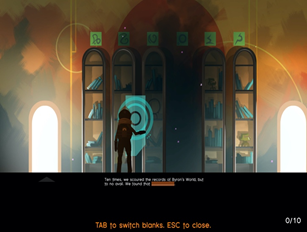Written by Sarah Cho
Born in South Korea and having lived my toddler years there, I learned to read and write in the Korean language first; English was not my primary language and I had to learn to write my ABCs almost simultaneously as I was mastering the basic Korean alphabet. Upon moving to the U.S., my parents spoke to me almost exclusively in Korean at home. I never thought it strange that I bounced between the two languages, home language and school language, but the cultural transition was not always easy.
In third grade, I was assigned a book report of making a shoe box diorama and writing up a paragraph that describes the scene depicted in the project. Mrs. Thompson, my homeroom teacher, had even created a rubric with instructions that requested parents help and participate in their child’s project. I was delighted to engage some artistic flair in my school assignment and I immediately requested my mother’s help with the glue gun because I knew her aesthetic skills would come in handy. We worked many hours into the night until I was satisfied with the final result.
The next day, I set my diorama on the table where all of my classmates’ projects rested until it was each of the student’s turn to present it. After glancing at the other projects, my heart thudded rapidly in trepidation. I was completely mortified. I had not been mentally prepared to bring an incorrectly produced project to school.
When the dreaded moment finally came, I slowly walked up to the table and wrapped my shaking fingers around the personally designed shoebox. As I stood in front of my peers, I opened my lips to speak. No words came out. My eyes brimming with tears, I shamefully faced my classmates as they tilted their heads side-to-side confused. Their eyes shifted back and forth from my reddening face to my project that looked different from everybody else’s. After a few, excruciatingly long minutes of trying to explain the creation I had made, I broke down in tears. Mrs. Thompson swiftly intervened as she handed me the bathroom hall pass and suggested that I recollect myself with a little break. In those few moments in the bathroom, I cried my little heart out. I had been so proud of my creation, but why had mine looked so different?
I looked at my puffy-eyed reflection in the mirror and I despised being the only Asian girl in my grade. I was tired of explaining why my lunch was a salad that came in a styrofoam to-go box; I did not want to explain that my mother was an immigrant who worked full-time at a sandwich shop and neither had the time nor the cultural understanding of what American third-graders bring from home as packed lunch. My nine-year-old self merely longed to have the same PB&J sandwiches in brown paper bags or the do-it-yourself Lunchables that my classmates brought to school every day. But most importantly, I hated the way I could not stop being embarrassed of my differences.
As I grew up, I consistently performed well in class, but occasionally struggled to understand unfamiliar directions. By the time I was in college and taking the required first-year writing seminar, I worked with my professor to catch many detrimental habits as a writer. Together, we found that I was an abstract thinker, especially because I would try to incorporate multiple ideas and concepts. Therefore, naturally, writing happens when I want to organize my ideas or when I want to process intangible information in my mind in a more physical form. Also, I recognized my tendency to fully dissect a rubric before jumping into writing. In hindsight, these habits (abstract thoughts and need for clear instructions for a starting point) may have formed due to my cultural background that does not stem from a western worldview.
Much research shows that culture can influence the way people think, experience, and write. According to Richard E. Nisbett (2003), “East Asian thought tends to be more holistic…They also emphasize change, and they recognize contradiction and the need for multiple perspectives, searching for the ‘Middle Way’ between opposing propositions.” Meanwhile, Westerners incorporate formal logic, categories, and rules to analytically explain phenomena. This stems from the different classical philosophies that the East and West based their ideas upon. Many Eastern countries based scholarly knowledge through the works of Lao Tzu and Confucius, while Western countries emphasized the works of Aristotle, Cicero, and other classical Greek and Roman teachers.
As many non-Western students are either not familiar with such Sophistic and Aristotelian-based style of writing or are confused by the necessity of it, understanding the historical and philosophical background of Eastern rhetoric could better allow educators to recognize the variety of ways to think about the student writing process. Teachers, as well as students, would greatly benefit from understanding different worldviews and being more open to various writing processes to give and receive appropriate guidance.
In addition to historical differences, modern scholars in the field of composition stress the importance of understanding how different experiences (including cultural) and backgrounds can impact the writing process. First and foremost, goal-setting and understanding the purpose behind a lesson are important processes for students as well as teachers to go through when they begin learning or teaching something new. Nonetheless, these goals and rules of English writing are systematically created by those who have been taught with a Western worldview and most likely with Aristotelian and other classical Greek/Roman rhetorical strategies. For instance, concepts like Aristotle’s three rhetorical appeals (ethos, pathos, and logos) or Cicero’s five canons of rhetoric (invention, arrangement, expression, memory, and delivery) are popular concepts immersed in secondary English classrooms and college English courses. This is further stressed in most educational settings, whether it is in a writing center or a first-year composition classroom – the end goal oftentimes has become learning how to write well from a structural or grammatical standpoint. Then, the question becomes whose standard of “good writing” are instructors and tutors thinking of as they guide students?
One way to embrace cultural differences as some experts suggest is through a form of reflection to allow a deeper understanding of the writing process instead of forcing concepts that may not make sense to students due to their different backgrounds. In “Documenting and Discovering Learning: Reimagining the Work of the Literacy Narrative,” Julie Lindquist and Bump Halbritter make an interesting point that “…writing is positioned as a means of learning, rather than as the goal of learning” (417). With a shift in focus of the learning process, such a perspective would definitely change the way both student and teacher alike experience the learning process. Furthermore, the authors suggest that the writing process itself is a “system of informed reflection and that it becomes “an authentic expression of self-realization” (Lindquist & Halbritter, 423). By understanding the socio-cultural background and the experiential history of the student, the teacher gains a deeper insight into how to lead the writer towards his/her development. In this way, the writing process itself becomes a part of the writer’s identity.
The abstract concepts of discovering identity through narrative writing are more concretely exemplified in Talking Back as Bell Hooks explores her own interest in African-American poetry, the significance of finding a voice, and the notion of speaking out. Through her life experiences, Hooks learns to find her “authentic voice” and finds out there can be a variety of voices and not just a single definitive voice. Also, she points out that due to different cultural contexts, students may fear speaking out in the classroom, especially if the student feels that his/her narrative is unrelatable and might be criticized by peers who have had different experiences. Hooks also asserts that dominant societies may lump the voices of marginalized groups, despite the fact that within a minority group there may be a range of narratives that do not deserve to be forcefully limited in a single category. (As a Korean-American who grew up in an immigrant family myself, the points that Hooks makes really hit home.)
In contrast to Hooks and her perspective on narrative writing as an African-American woman, in “Writing on the Bias,” Linda Brodkey writes about her own experiences of white middle-class culture. Brodkey describes her writing process as beginning when something replays in her mind again and again. Moreover, she argues the importance of writing “on the bias” (Brodkey, 546). Can Brodkey be comfortable enough to express her biases while hoping other writers do so as well because she was privileged to do so in white middle-class culture? Would a non-white writer be able to experience the satisfaction of openly writing with bias just as easily? Upon synthesizing Brodkey’s family background, her experiences as a child, and her particular viewpoints as well as Hooks’ narrative, the reader can understand both authors’ perspectives after holistically reading about their socio-cultural backgrounds.
Just like a doctor or a nurse may ask a patient a list of questions regarding his/her family medical history as well as personal medical history, an educator might want to invest some time to purposefully comprehend the literacy narrative of a student. As Lindquist and Halbritter propose that “…any act of literacy entails not only genre-specific understanding but also situated awarenesses of socio-rhetorical implications and engagements,” perhaps there are some hidden treasures behind understanding a writer’s own narrative before jumping straight into the mechanical aspects of learning how to write (Lindquist and Halbritter, 437).
Each writer most likely experiences various dilemmas regarding the writing process. Nonetheless, I have recognized my good and bad habits of writing through my own cultural experiences and background. (I am sure there are other habits that I haven’t realized too.) Wouldn’t it be worth a try for instructors and tutors to understand a bit of the students’ cultural background and narratives before jumping in to help them with their writing?
References
Brodkey, Linda. “Writing on the Bias.” College English, vol. 56, no. 5, 1994, pp. 527–547. JSTOR, www.jstor.org/stable/378605
Confucius. The Analects of Confucius: a Philosophical Translation. New York: Ballantine Books, 1999.
Choi, Young Jun, “Yonsei GSIS: Comparison of Eastern and Western Civilizations Lecture” October 2014. New Millenium Hall. Seoul, South Korea.
Jensen, J. V., Rhetorical emphasis of Taoism. Rhetorica, 5(3), 219-229, 1987
Lao-Tzu. Tao Te Ching
Lindquist, Julie, and Bump Halbritter. “Documenting and Discovering Learning: Reimagining the Work of the Literacy Narrative.” College Composition and Communication, vol. 70, no. 3, 2019, pp. 413-445
Lu, Xing & Frank, David A. On the study of ancient Chinese rhetoric/Bian, Western Journal of Communication, 57:4, 445-463, 1993
Nisbett, Richard E. The Geography of Thought : How Asians and Westerners Think Differently– and Why. New York :Free Press, 2003.
Williams, James D. An Introduction to Classical Rhetoric: Essential Readings. Wiley-Blackwell, 2009.
















